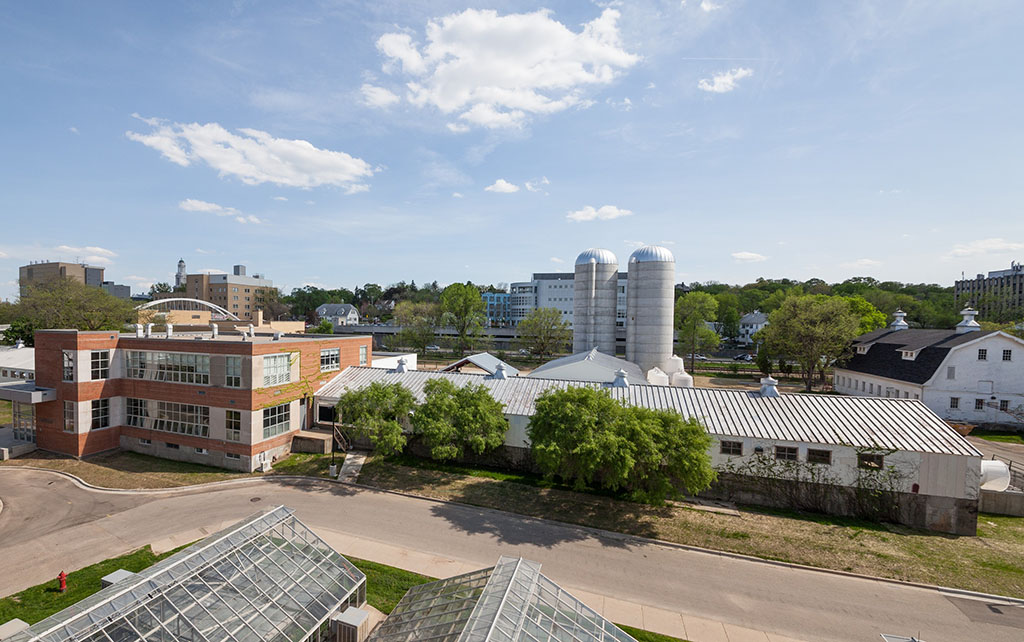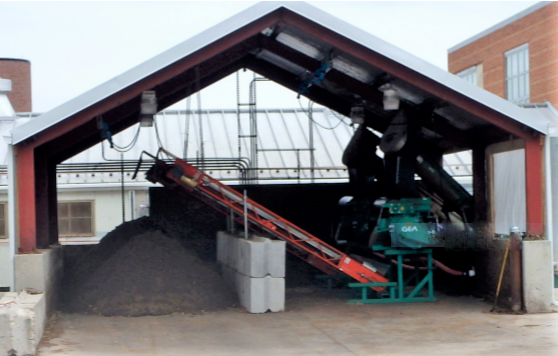In the heart of Madison on the University of Wisconsin–Madison campus there are cows. These cows reside at a dairy research facility on campus called the Dairy Cattle Center – a working tie-stall milking facility that houses 84 milking cows and also serves as a classroom. Here, faculty can conduct research and students can choose from a variety of hands-on educational opportunities as part of the broader Arlington Agricultural Research Station (ARS) program that supports the College of Agricultural and Life Sciences at the University of Wisconsin-Madison.

Photo courtesy of UW-Madison Department of Dairy Science
The newly renovated Dairy Cattle Center had modified their manure handling system to allow for better manure management on campus. That system consisted of two gutter barn cleaners, two inclined augers and a roofed stacking area. The sewer system was upgraded as well, and this is how the problem began. The system combined stormwater from the outside lots with the facility’s manure, utilizing the augers to mascerate the manure into a more flowable consistency. However, this semi-solid nature of the manure meshed occasionally with bedding materials used at the center and resulted in a debris that would plug the two new settling basins prior to discharging into the Madison Metropolitan Sewer District (MMSD). The problem was further compounded when it rained, as the basins would fill and eventually overrun onto the ground.

In addition, the two basins were large and deep. Accessible only by manhole, maintenance and daily operational use was challenging. This combination of factors resulted in a continuous rise in both cost and stress upon the system and staff. Eventually, UW-Madison and the Wisconsin Department of Administration embarked upon a means to fix the problem.
MSA was asked to evaluate the existing system, assess the management of the facility, and evaluate equipment alternatives to develop a solution. The recommendation was to install two dual-drum roller separators to dewater the manure stream onto two belt conveyors and then stack the material on half of the existing roofed stack area. The system would create a stockable, non-flowable solid manure pile and discharge the water into the sewer system, reducing the solids load to the two settling basins and improving the operation of the basins. Both the university and Department of Administration staff agreed it was the smartest, safest and most sustainable approach, voting to move the project to final design and construction.
The project was completed in the fall of 2016 and now safely dewaters, separates and conveys manure from the cattle center. In addition, it serves as a new educational opportunity for students who are learning the best practices of agricultural management and who will become the future of our farming and agricultural industries.
